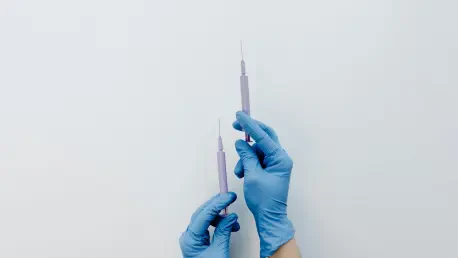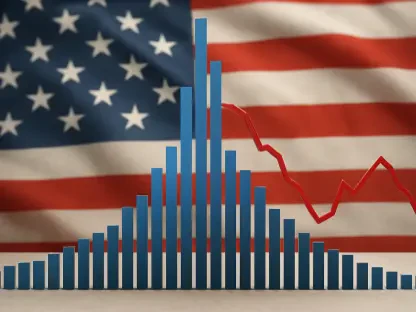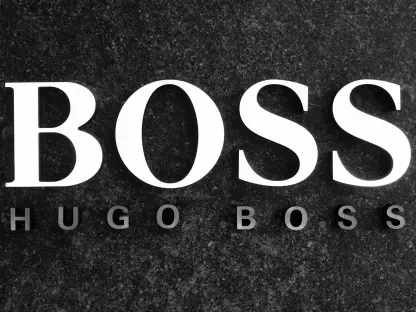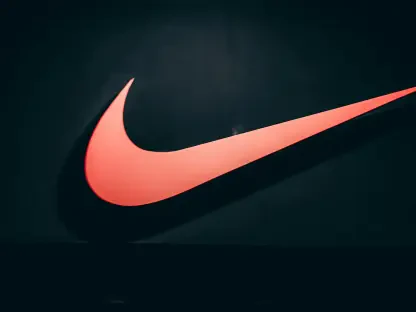In an era where healthcare demands precision and convenience, the prefilled syringe manufacturing industry is witnessing unprecedented growth, fueled by a pressing need for reliable drug delivery systems. These single-dose containers, pre-loaded with injectable medications, are revolutionizing how treatments for chronic diseases, vaccines, and emergency care are administered, offering a seamless alternative to traditional vials and syringes. Their ability to minimize dosing errors, improve patient adherence, and reduce contamination risks has made them indispensable in modern medicine. As the global market for these devices surges, understanding the underlying forces propelling this expansion becomes essential for pharmaceutical companies, healthcare providers, and industry stakeholders. This exploration uncovers the critical drivers behind the rise of prefilled syringes, from therapeutic demands to technological innovations, and examines how strategic and geographical factors are shaping a transformative landscape in drug delivery.
The momentum in this sector is not merely a response to current needs but a proactive adaptation to evolving healthcare challenges, with chronic conditions on the rise and patients increasingly managing their own treatments. Prefilled syringes stand out as a solution that bridges safety with simplicity. Beyond patient benefits, the industry is also navigating complex operational dynamics, including outsourcing trends and competitive pressures, while leveraging advancements to meet a growing pipeline of injectable therapies. This intricate interplay of factors sets the stage for a deeper dive into what is driving this remarkable growth trajectory.
Market Demand and Therapeutic Needs
Rising Chronic Diseases and Self-Medication
The escalating prevalence of chronic illnesses such as diabetes, autoimmune disorders, and oncology-related conditions is a significant catalyst for the expansion of prefilled syringe manufacturing. These health challenges often require regular injections, sometimes multiple times a day, placing a burden on patients to administer medications accurately. Prefilled syringes address this issue by offering a user-friendly design that eliminates the need to measure doses manually, thereby reducing the risk of errors. This is particularly vital for individuals managing their conditions at home, where self-medication is becoming more common due to the push for patient independence and reduced healthcare facility visits. The simplicity of these devices empowers patients, ensuring they can adhere to complex treatment regimens with confidence, which in turn drives demand for prefilled syringes as a preferred delivery method among drug developers targeting chronic disease markets.
Moreover, the societal shift toward aging populations globally compounds the need for such solutions. Older adults, who often grapple with conditions requiring injectable therapies, benefit immensely from the ease of use that prefilled syringes provide. This demographic trend aligns with broader healthcare goals of improving quality of life and reducing hospital readmissions through effective at-home care. The growing focus on personalized medicine also plays a role, as treatments tailored to specific patient needs frequently rely on precise dosing that prefilled syringes can deliver. This intersection of demographic changes and therapeutic innovation underscores why the demand for these devices continues to soar, shaping manufacturing priorities and investment in this space.
Broad Therapeutic Applications
Prefilled syringes are proving their versatility by catering to an extensive range of therapeutic areas, including blood disorders, infectious diseases, metabolic conditions, and neurological disorders. Their design accommodates various drug formulations, making them suitable for vaccines, therapeutic proteins, and other injectables critical to managing diverse health issues. This adaptability is a key factor in their widespread adoption, as pharmaceutical companies seek delivery systems that can handle everything from emergency treatments to long-term care solutions. The ability to serve such a broad spectrum of medical needs not only boosts market demand but also encourages innovation in syringe design and manufacturing processes to meet specific therapeutic requirements.
Additionally, the role of prefilled syringes in addressing public health crises cannot be overstated, especially during pandemics or widespread infectious disease outbreaks when rapid deployment of vaccines is critical. Their ability to ensure efficient and safe administration on a mass scale makes them indispensable in such scenarios. The pre-measured doses eliminate preparation time and reduce the risk of contamination, which is crucial during urgent health responses. Beyond emergencies, their application in oncology, where precise dosing of potent drugs is essential, highlights their importance in specialized care. This wide applicability across both routine and critical healthcare settings solidifies the position of prefilled syringes as a cornerstone of modern drug delivery, driving sustained growth in their production and use.
Technological and Operational Advancements
Innovations in Aseptic Processes
Technological progress in aseptic fill and finish operations stands as a cornerstone of growth in prefilled syringe manufacturing, ensuring that these devices meet stringent safety and quality standards. Advanced aseptic techniques minimize the risk of microbial contamination during production, a critical concern when dealing with injectable medications that bypass the body’s natural barriers. Innovations such as isolator technology and robotic automation in cleanroom environments have enhanced precision in filling syringes, reducing human error and improving consistency. These developments are vital as the industry scales up to meet the increasing demand for complex biologics and other sensitive drugs, positioning manufacturers to deliver safer products to a global market with confidence.
Furthermore, the integration of real-time monitoring systems in manufacturing lines has elevated quality control to new heights. These systems track variables like fill volume and seal integrity during production, ensuring each syringe meets regulatory requirements before reaching patients. The push for sustainability also influences technological advancements, with efforts to reduce waste and energy consumption in aseptic processes gaining traction. As regulatory bodies worldwide tighten guidelines on sterile manufacturing, such innovations not only ensure compliance but also build trust among stakeholders. This focus on cutting-edge technology in production is a driving force behind the market’s ability to expand rapidly while maintaining the highest standards of safety and efficacy.
Outsourcing for Expertise and Efficiency
The intricate process of filling and finishing prefilled syringes has spurred a notable trend toward outsourcing, as drug developers increasingly turn to contract service providers for specialized expertise. This shift is driven by the technical challenges of ensuring precise dosing and maintaining sterility, tasks that require advanced equipment and skilled personnel often beyond the scope of in-house capabilities for many companies. By partnering with contract manufacturers, developers can focus on drug discovery and marketing while leveraging the operational efficiencies and regulatory know-how of experienced providers. This trend is a significant growth driver, as it allows for faster scaling of production without the burden of heavy capital investment in facilities.
Equally important is the cost-saving aspect of outsourcing, which aligns with the pharmaceutical industry’s broader push to optimize budgets without compromising quality. Contract service providers often operate at economies of scale, offering competitive pricing and flexibility to handle both small batches for clinical trials and large volumes for commercial release. The global nature of these partnerships also means access to diverse talent pools and innovative practices, further enhancing production capabilities. As the demand for prefilled syringes surges, this reliance on outsourcing is expected to deepen, fostering a collaborative ecosystem where expertise and efficiency converge to meet market needs and accelerate the delivery of critical therapies to patients worldwide.
Competitive and Geographical Dynamics
Dominance of Large Providers and Emerging Players
The competitive landscape of prefilled syringe manufacturing is characterized by a stark disparity in capacity distribution, with over 100 global companies engaged in contract services, yet approximately 80% of the capacity is controlled by large providers. These major players, often employing over 500 staff, possess the infrastructure and resources to handle high-volume production and complex projects, making them dominant forces in meeting the industry’s demands. Their established presence and ability to offer end-to-end services, from clinical to commercial scales, position them as preferred partners for large pharmaceutical firms. This concentration of capacity underscores the critical role of scale in maintaining a competitive edge within the market.
However, the market also presents fertile ground for smaller players, particularly in niche areas or emerging regions where agility and localized knowledge can be advantageous. These smaller providers often focus on specialized services or cater to specific therapeutic segments, carving out unique positions despite the dominance of larger counterparts. Their ability to adapt quickly to client needs and offer personalized solutions adds a layer of diversity to the competitive dynamic. As demand for prefilled syringes grows, the interplay between large-scale efficiency and small-scale innovation creates a balanced ecosystem where both ends of the spectrum contribute to overall market expansion and resilience.
Established Hubs and Emerging Markets
Geographically, North America and Europe stand as the epicenters of prefilled syringe manufacturing, hosting a majority of service providers and drug developers focused on combination products. These regions benefit from robust regulatory frameworks, advanced infrastructure, and a high concentration of pharmaceutical innovation, making them key hubs for production and partnership opportunities. The established nature of these markets ensures a steady flow of investment and technological advancement, sustaining their leadership in the global landscape. Their dominance is further reinforced by proximity to major healthcare markets, facilitating efficient distribution and collaboration with leading industry stakeholders.
In contrast, the Asia-Pacific region is emerging as a formidable player, driven by cost advantages and rapidly developing technical expertise in countries like India and Taiwan. Lower operational costs attract drug developers seeking affordable manufacturing solutions without sacrificing quality, while improvements in regulatory compliance and infrastructure bolster the region’s appeal. This shift signals a broader geographical diversification, balancing the traditional dominance of Western markets with new growth opportunities in the East. As these emerging markets gain traction, they contribute to a more distributed global supply chain, reducing dependency on any single region and enhancing the industry’s ability to respond to fluctuating demands and regional healthcare needs.
Strategic Growth Initiatives
Partnerships and Capacity Expansions
Strategic alliances and capacity expansions are pivotal in propelling the growth of prefilled syringe manufacturing, as service providers actively invest in scaling their operations to meet rising demand. Partnerships between contract manufacturers and drug developers facilitate knowledge sharing and resource pooling, enabling faster production timelines and access to cutting-edge technologies. These collaborations often focus on specific therapeutic areas or innovative delivery systems, ensuring that the industry remains agile in addressing evolving market needs. Such cooperative efforts are essential for navigating the complexities of regulatory landscapes and delivering high-quality products to diverse global markets.
Beyond partnerships, significant investments in facility upgrades and new production lines are underway to boost manufacturing capacity. Many providers are expanding their cleanroom spaces and integrating advanced automation to handle larger volumes while maintaining stringent quality standards. These expansions are often strategically located to serve high-demand regions or tap into cost-effective areas, optimizing both reach and efficiency. The proactive nature of these initiatives reflects a forward-thinking approach, preparing the industry for anticipated surges in demand driven by the growing pipeline of injectable drugs and the increasing preference for prefilled syringes as the delivery mechanism of choice.
Versatile Service Offerings
The versatility of contract service providers in prefilled syringe manufacturing is a key driver of growth, with over 55% of these companies capable of handling both biologics and small molecules. This flexibility allows them to cater to a wide range of client needs, from complex biopharmaceuticals requiring specialized handling to more straightforward small molecule drugs. By offering comprehensive solutions across different drug types, providers can attract a broader client base and adapt to shifts in therapeutic focus, such as the rising prominence of biologics in modern medicine. This adaptability strengthens their market position and fuels sustained demand for their services.
Additionally, many prominent providers operate at both clinical and commercial scales, supporting drug developers through every stage of the product lifecycle. This end-to-end capability is critical for seamless transitions from trial phases to market launch, reducing delays and ensuring consistency in production quality. Around 60 major companies exemplify this trend, offering scalable solutions that meet the diverse demands of pharmaceutical partners. Such comprehensive service offerings not only enhance client trust but also position the industry to handle the increasing complexity and volume of injectable therapies, driving further growth as prefilled syringes become integral to healthcare delivery systems worldwide.
Material and Design Flexibility
Compatibility with Glass and Plastic Barrels
The material flexibility of prefilled syringes, manufactured using both glass and plastic barrels, significantly contributes to their market growth by addressing varied drug and patient requirements. Glass barrels, long favored for their chemical stability and compatibility with a wide range of medications, remain a staple in the industry, particularly for drugs sensitive to interaction with container materials. Their proven track record in maintaining drug integrity over extended periods makes them a trusted choice for manufacturers and developers aiming to ensure product safety and efficacy. This enduring preference for glass supports consistent demand in production lines tailored to its properties.
On the other hand, plastic barrels are gaining prominence due to their lightweight nature and resistance to shattering, offering practical advantages in handling and transportation. These attributes are especially beneficial for patients managing self-administration, as they reduce the risk of breakage during use. Plastic also allows for innovative design features, such as integrated safety mechanisms, which enhance the user experience. As manufacturing techniques for high-quality medical-grade plastics advance, their adoption is expected to rise, providing manufacturers with options to balance cost, safety, and functionality. This dual-material approach broadens the appeal of prefilled syringes across diverse therapeutic and logistical contexts, driving their widespread integration into healthcare.
Single and Dual Chamber Configurations
The availability of single and dual chamber configurations in prefilled syringes further fuels market expansion by catering to distinct drug delivery needs. Single chamber syringes, designed for straightforward administration of pre-mixed medications, dominate the market due to their simplicity and cost-effectiveness. They are ideal for a vast array of treatments, from vaccines to routine injectables, where immediate use without additional preparation is paramount. Their streamlined design supports high-volume production and aligns with the growing emphasis on user convenience, making them a critical component of the industry’s growth trajectory as demand for ready-to-use solutions escalates.
Dual chamber syringes, meanwhile, address more specialized requirements, particularly for drugs that must be reconstituted at the point of administration, such as certain biologics or lyophilized formulations. By separating active ingredients and diluents until the moment of use, these syringes preserve drug stability and potency, ensuring optimal therapeutic outcomes. Their application in high-value treatments, often involving complex or sensitive compounds, highlights their role in advancing precision medicine. The ability to offer both configurations allows manufacturers to meet a spectrum of clinical demands, from basic to advanced, reinforcing the versatility of prefilled syringes and propelling their adoption across an expanding range of medical applications.
Future Pathways and Industry Momentum
Sustained Growth and Market Projections
Looking ahead, the prefilled syringe manufacturing sector is poised for remarkable expansion, with a current market valuation of USD 931 million and a projected compound annual growth rate of 11.9% through 2035. This trajectory reflects the enduring demand for safe and efficient drug delivery systems amid rising healthcare needs globally. Stakeholders are encouraged to focus on aligning production capabilities with emerging therapeutic trends, particularly in biologics and personalized medicine, to capitalize on this growth. Investment in scalable infrastructure will be crucial to avoid bottlenecks as the pipeline of injectable drugs continues to expand.
Strategic Considerations for Stakeholders
As the industry evolves, strategic planning must prioritize innovation in manufacturing processes and partnerships to address future challenges. Collaborations between developers and contract manufacturers can drive efficiencies, while exploring untapped markets in regions like Asia-Pacific offers avenues for diversification. Embracing sustainable practices in production, such as reducing material waste, will also enhance competitiveness in a regulatory landscape increasingly focused on environmental impact. By adopting these forward-looking strategies, the sector can sustain its momentum, ensuring that prefilled syringes remain a vital tool in advancing global healthcare delivery.









